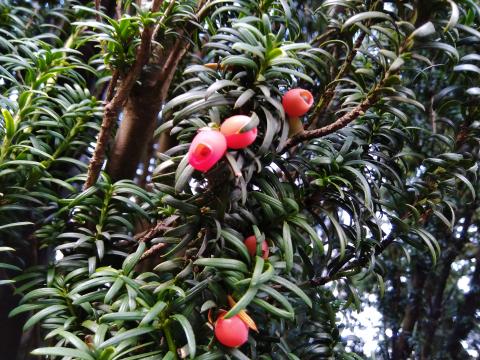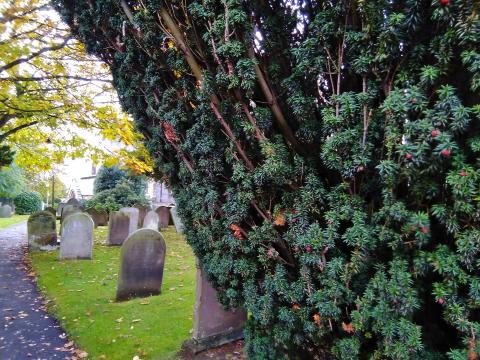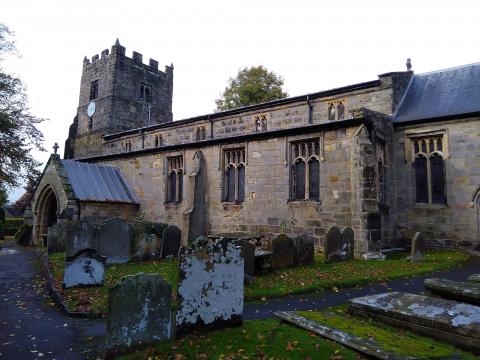Yew Berry

At Easingwold in North Yorkshire, I beheld a common sight: yew trees growing in a churchyard. These fine trees are highly poisonous, yet King Edward I ordered they be grown by churches both to protect the buildings and as a source of yew wood from which archers’ bows were made. The tree is highly toxic to people and livestock, so restricting its growth to churchyards would have allowed access to its wood while minimising the threat to sheep and cattle.
Interestingly, the only part of the tree that won’t harm a mammal’s stomach is the aril, the red outer flesh of the berry which protects the seed. The latter contains taxine alkaloids and cardiotoxic chemical compounds which, taken in sufficient quantity, may result in death. Indeed, the Celts were known to employ yew leaves and berries in the commissioning of suicide. Birds are unaffected by such poisons, their stomachs not digesting the seeds, merely excreting them, rather helpfully, into new ground.
So the berry may taste pleasant and do no harm, but something within it may cause death. A great picture of sin, if ever there was one. At first, the flavour is satisfying but we go on to swallow the whole, whereby our end is sealed. Thankfully, Christ our Saviour drank from the deathly cup of God’s wrath that we might drink again from the sweet waters of life.

The old name for York comes from the words eburos, meaning ‘yew-tree’ and ākon, meaning ‘place of’. A proud Lancastrian might therefore point out that 'Yorkshire' means the shire of the place of poison, but I would not fain to stoop so low.

- Log in to post comments


 Sunday Worship 10.45am & 6.00pm
Sunday Worship 10.45am & 6.00pm